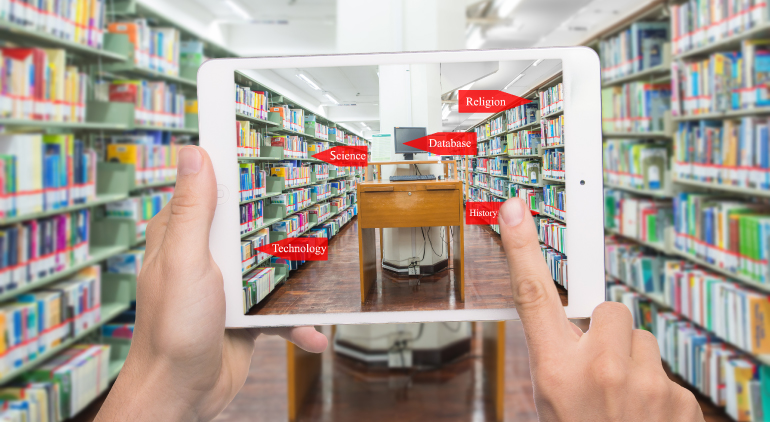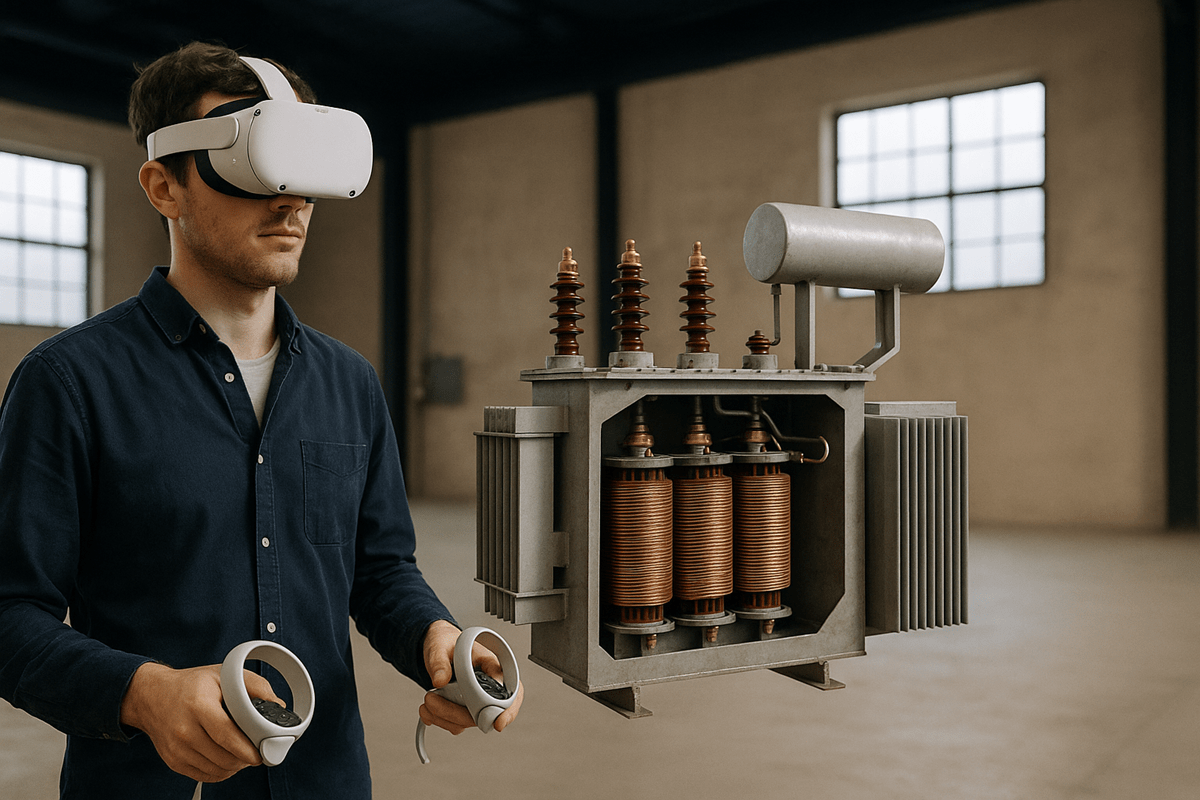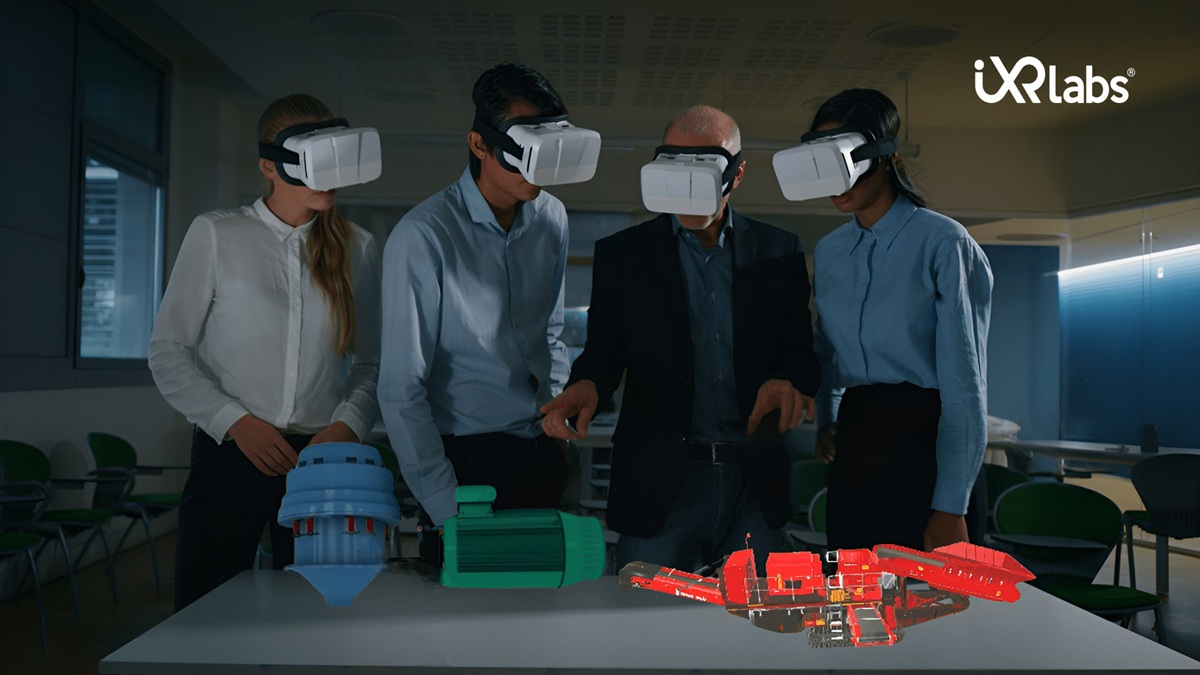5 Ways How Augmented Reality Can be Used in Next-Gen Libraries

When eBooks were released, people thought that the need for books will slowly extinguish. This could mean the end of an era and the shutting down of libraries and bookstores! But this, thankfully, was not the case.
Hard bind books are still expensive and library cards still hold a permanent place in our wallets. However, converting books into software did affect libraries.
What was available in libraries after searching for at least 30 minutes, was available for free online in under a minute. eBooks and online assessment reduced the people’s dependence on libraries.
However, libraries kicked back and matched up with the technology. Now there were original books available at online libraries! While that kept business afloat for online AR libraries, original libraries, where one could peacefully lose themselves in a book.
It is obvious that the reason people prefer online libraries or eBooks in comparison to physical libraries, is due to the convenience.
People always prefer the environment of a library and yet opt for online libraries or eBooks. This is because with eBooks, people can click on one word and know the meaning.
They can google a particular book on the online library and once purchased, can get recommendations on the same genre. All of these reasons and a few more are the reason for the downfall of physical libraries.
What physical libraries need is to ramp up their library to match modern technology. The convenience of their customers here will play the major role. People prefer physical books over eBooks and physical libraries over noisy classrooms.
However, they are gradually indulging in eBooks and online libraries because it is an easy way out! Having said that, technology like Augmented Reality (AR) in libraries could exist, then physical libraries will be back with a boom.
AR is a subtle form of an immersive technology in education that we use everyday without even noticing. When you click away hundreds of pictures on Snapchat with filters, those filters use AR technology.
Using any form of online payment with a QR code like PayTM or Google Pay are all examples of using AR technologies! AR has been dominating and changing the world around us subtly enough, for us to not notice but use in our everyday activities frequently.
Hence, AR can help shape the libraries for the next generation. How libraries can use AR has been explained below:
1. Locates Books for You
_6564.jpg)
We have all been to a library. There is no doubt that one of the prime difficulties that we face when in a library, is FINDING that one book you are looking for.
Of course, if you are in a library and get fed up of looking for the book after a while.
You leave or grab another book (any other book that is close enough to the book you were looking for) and start reading. This is such an inconvenience that after a while, people give up on libraries.
An AR based application in your smartphone (that basically everyone owns now a days), can help you find that book by just entering the details.
The applications will act like a GPS with the end point being your book!
The detailed directions are so perfect that you can even scan the shelf with your phone. It will point out the book for you without you having to read the title of each and every book on all the shelves.
 Get the App from Meta Store: Download Now
Get the App from Meta Store: Download Now
2. Provides Detailed Information
If locating a book in a library was not enough to convince you of an AR powered library, maybe this will. If you are reading a book that is related to glucose levels in medicine, then you can point your camera at the book and activate an AR based application.
This will then enable you to access information on the current topic that you are reading and unveil the most recent topics that are related. You can even narrow down the information you want and focus on a whole concept or a single diagram or theme in the book.
3. Suggests Similar Books
The potential of AR in library is unimaginable! When you shop for a product on Amazon, you must have noticed how there are many recommended products, basis your search.
The suggested products may be marginally different like lowered price, upgraded version or even just better ratings.
Yet, many people scroll through this suggested list as they want to make the right choice and invest in the best option.
Similarly, with AR, you can scan your book which can then show you books that are similar to the one you want to read and may be marginally different.
You can make an informed decision based on the options presented and invest your time in the right book!
4. Displays Genres in The Entire Library
AR in libraries was all about bringing in convenience to physical libraries. One feature of AR in libraries that supports this convenience is that of displaying genres. As you scan the library with your smart device from one point.
The screen will label all the shelves and floors appropriately by genre, theme, and subject. In simple words, if you have entered a library without a single book in mind but a genre or subject, then AR can lead the way to your section of interest.
5. Suits the Fast World
Generation alpha will be completely dependent on technology. Physical libraries, simply will not survive without adopting to the latest technology. Physical libraries need to match the pace of generation alpha.
Slow things are no longer in demand and searching for a book for half an hour is not enough, when one can possibly finish a book in that same time frame!
Hence, an AR synced library will be fast and convenient to match the fast-paced learning that people need in the future.
The potential of AR in libraries, as you can see, is endless! It is important that all physical libraries invest in AR technology trends in higher education, as that is the only possible future for physical libraries and the suited library for the following generations.
-min.png)




.png)